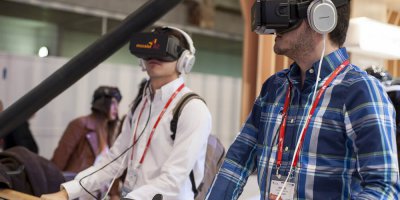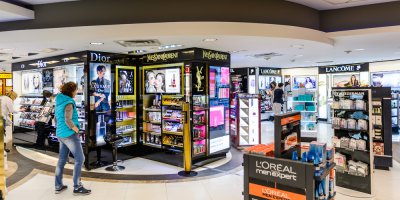
IKEA recently announced the launch of IKEA Place, an augmented reality app that lets people virtually place furniture in their home. Source: IKEA
100m customers will shop in augmented reality by next year
RETAILERS are constantly looking for new ways to wow their customers by leveraging new and emerging technologies.
One of the most interesting solutions they’ve turned to recently is augmented reality (AR). Stores from Macy’s to IKEA have made headline using AR and really pulled customers into stores.
“AR lets us redefine the experience for furniture retail once more, in our restless quest to create a better everyday life for everyone, everywhere,” said Inter IKEA Systems Leader Digital Transformation Michael Valdsgaard.
As the competition with e-commerce intensifies, Gartner believes more and more retailers will offer AR experiences in-store and online, in order to win back customers and make the shopping experience more exciting.
Gartner believes that AR can shake up the customer experience by individualizing retailers’ offers and enabling customers to visualize products in different settings. By 2020, the company believes that 100 million consumers will shop in AR online and in-store.
“Retailers are under increasing pressure to explain the purpose of physical stores, and take control of the fulfillment and return process for cross-channel execution,” Gartner Principal Research Analyst Hanna Karki said.
“At the same time, consumers are progressively defining the value provided by the experiences they receive from retailers. As a result of these pressures, retailers are turning to AR and VR to offer customers a unified retail experience inside and outside retail stores.”
Retailers see the potential that AR offers as a technology. By 2020, Gartner’s study found that 46 percent of retailers plan to deploy either AR or VR solutions to meet customer service experience requirements.
“The impact of AR or VR in retail can be transformative. Retailers can use AR as an extension of the brand experience to engage customers in immersive environments and drive revenue.”
“For example, IKEA’s Place app enables customers to virtually ‘place’ IKEA products in their space. Additionally, AR can be used outside the store after a sale to increase customer satisfaction and improve loyalty.”
Recently, Zara, Lancôme, Helzberg Diamonds, and many other retail brands have announced that they’re going to build an AR experience soon.
“The experience uses augmented reality technology through the Microsoft Surface Pro 4 to try on more than 100 ring styles in multiple viewing angles by placing their left hand on a custom designed palm rest with motion-tracking sensors,” a Helzberg spokesperson told local media.
“We have received extremely positive feedback from customers; we’ve heard it has enhanced their ring-shopping experience.”
At the end of the day, more retail businesses are making an investment in augmented reality. The technology is less intrusive than virtual reality, requires no special hardware (except a smartphone), and is a great way to improve the retail experience significantly.




